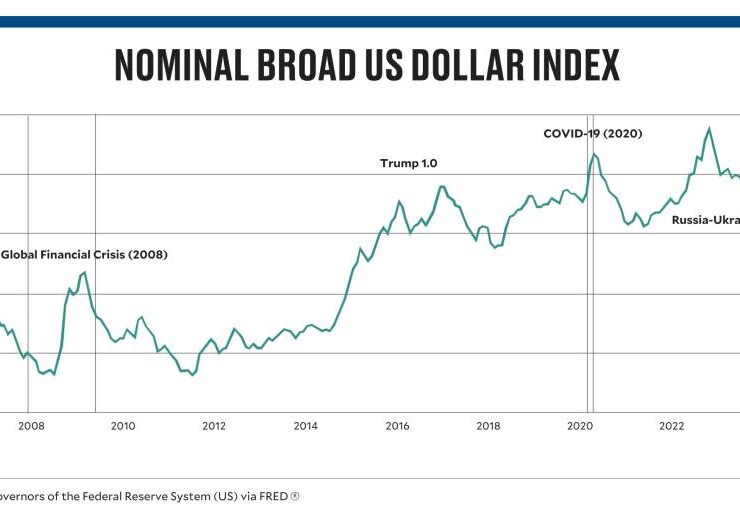What it means when companies are tightening balance sheets

Not all financial problems come from large losses or heavy debt. Sometimes, the warning signs are smaller—like a company running low on cash to cover daily operations or falling behind on payments to suppliers.
These early signals often surface in the company’s working capital, long before they show up in earnings reports or stock prices. One of the best ways to spot this early is by looking at the working capital to total assets (WC/TA) ratio.
The WC/TA ratio tells us how much of a company’s total assets are available to meet its near-term liabilities. It is calculated by taking working capital (current assets minus current liabilities) and dividing it by total assets. It answers the question: what portion of a company’s asset base is available to handle short-term needs?
A high WC/TA ratio—typically above 0.20—indicates strong liquidity, which suggests that the company has enough cushion to meet short-term obligations while maintaining operational flexibility.
On the other hand, a ratio below 0.10—or worse, a negative figure—raises red flags because it may signal mounting pressure on short-term resources and suggest the company is relying heavily on future revenue or external financing just to stay afloat.
If we look at the listed companies on the Philippine Stock Exchange, we see that the share of firms with a solid WC/TA ratio above 0.20 has fallen from 38.3 percent in 2019 to 36.7 percent in 2024.
Meanwhile, the proportion of companies with a WC/TA ratio below 0.10 rose from 46.1 percent to 50 percent. This suggests that more firms now face tighter short-term liquidity and reduced financial flexibility.
Now, while the WC/TA ratio shows how much of a company’s total assets are tied to working capital, it doesn’t tell the full story. To better assess short-term financial health, we also need to look at the current ratio.
This metric — calculated by dividing current assets by current liabilities — shows whether a company can meet its upcoming obligations using available resources. When combined, the WC/TA and current ratio give a more complete view of a company’s liquidity structure and short-term solvency.
A high WC/TA ratio (above 0.20) combined with a current ratio above 1.5 signals strong liquidity and low financial risk. It indicates that the company has ample working capital relative to its total assets and sufficient current assets to cover short-term obligations.
Among PSE-listed firms, the share in this category declined from 37.2 percent in 2019 to 35.1 percent in 2024. This drop of 2.1 percentage points may suggest that more companies are now tightening their balance sheets, a sign that maintaining strong financial positions has become more difficult amid the current economic conditions.
In contrast, a high current ratio paired with a low WC/TA (below 0.10) implies that a company can meet its near-term liabilities but lacks flexibility in its asset structure. This often indicates that a large portion of total assets is tied up in long-term or illiquid investments, which limits the firm’s ability to adapt during financial stress. While not immediately alarming, this mismatch may point to inefficiencies in working capital use.
The share of firms in this category rose slightly on the Philippine Stock Exchange—from 4.65 percent in 2019 to 5.24 percent in 2024. These are typically capital-intensive businesses—such as utilities or conglomerates—with steady cash flows. The increase may reflect strategic shifts in capital deployment, especially in a higher interest rate environment.
The most concerning case arises when both ratios fall below critical levels—WC/TA under 0.10 and current ratio under 1.0. This combination typically signals short-term financial strain and elevated risk of default, particularly in a fragile economic environment. Companies in this category often struggle to meet immediate obligations and lack the flexibility needed to respond to financial shocks.
On the Philippine Stock Exchange, the share of firms in this high-risk category increased from 28.3 percent in 2019 to 29 percent in 2024. While the change appears small at just 0.7 percentage points, the implication is serious: nearly one in every three listed companies now shows signs of short-term financial stress.
This trend may reflect tightening liquidity, slower revenue growth, or weaker access to credit. Broader macroeconomic pressures—such as rising interest rates, inflation, or extended payment cycles—could be driving this deterioration in financial health.
The combined effect of weaker liquidity cushions and a rise in financially strained firms points to growing vulnerability in corporate balance sheets. As more companies operate with less flexibility and thinner margins of safety, the market becomes increasingly sensitive to economic disruptions and tighter financial conditions.
Historically, markets tend to discount these risks through lower stock prices and compressed valuation multiples. Unless companies improve their working capital efficiency and restore stronger liquidity positions, these pressures may continue to drag on equity performance—especially for firms that are already exposed to operational and financing headwinds.




















